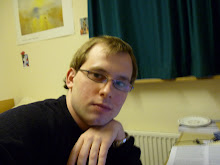

Norwich castle has a very interesting and long history. It is today a museum and has a diverse range of displays. There are quite a mixture of art and exhibition sections in the castle such as Anglo-Saxon and Viking, Modern Art, Crome and Cotman Art Gallery, Natural History Galleries, Decorative Arts, Boudica, Special Exhibitions and the Castle Keep. Additionally I have also been to the Battlements tour and the Dungeon tour which are added features to the museum.
The castle was built in 1066 and is over 900 years ago. The castle has been a royal palace, a prison and also a museum. In the museum it says ‘But this castle was much more than a military base. It was built to show wealth, power and prestige. It was a royal castle, fit for the King. During the King’s occasional visit, the government of the country took place here’. The castle represented power and the King could show off his wealth best here. There was a room made in the castle to represent specifically the wealth and power of the King. The castle was a place where the King could show off his power and money.
The castle was transformed into a prison in the 14th Century. Throughout this time the prisons were always overcrowded and conditions were awful up until the 18th Century. The walls in the cells were crumbling and there were no roofs. Rich prisoners though could rent bedding. One interesting thing about the museum is that you get a good idea of life in the prisons and what the prisoners ate and what they did with their time. From 1822-1827 prisoners were made to work by walking on treadmills, making shoes and tailoring sacks.
Norwich castle was also a place for public hangings and at times crowds from around 20,000 gathered around to see the event. Hangings eventually stopped in 1868 because people’s attitudes towards it were changing and people now thought that it was wrong.
In terms of food, the rich prisoners would get a better quality meal depending on what they have to offer to the prison officer. By the end of the 19thcentury however regulations changed and everyone had to eat the same food no matter what your wealth was.
I enjoyed the Battlemans tour in the castle because I was standing 120 feet of the ground and got a very nice view of Norwich. From the tour I learned that Norwich has over 30 medieval churches which a lot more than London or anywhere else in the UK. I also learnt that the market place was a lot bigger in the past.
The Dungeon tour gives you an idea of life for the prisoners. There were several forms of punishment in the dungeons such as Iron masks which were used for women who talk and nag too much. This was around the 1700-1800 period. In worst case scenarios some prisoners were left in dungeons that had no light or windows and only had one bucket.
The Crome and Cotman exhibitions were very interesting. One painting that I really liked was by Miles Edmund Cotman which is in this blog, the one with the trees and bull. Miles Edmund Cotman and John Joseph Cotman were sons of John Sell Cotman who is regarded as one of the greatest British artists ever alongside J.M.W Turner and constable. He was also the leading member of the Norwich school of artists.
The Natural History Galleries contains stuffed animals such as lions, dears, a polar bear and tigers.
Boudica was the queen of the iceni people who lived in the northern part of East Anglia. The Boudica exhibition talks about the upsiring of the iceni people and the attempts to overturn the Romans. Boudica destroyed Colchester, London and another city before eventually losing the battle.
The Timothy Gunner Gallery and the Anglo Saxon and Viking exhibition were also very impressive but I did not get enough time to look around and analyse these.
Overall I really enjoyed my visit to Norwich castle and it has taught me a lot about the city I currently live in. It has a lot of variety and character and you learn lots from it, had a good day.
I obtained this information from discussions inside the castle or from the exhibitions in the museum.
The Rikowski web site, The Flow of Ideas is at:
http://www.flowideas.co.uk
Gregory's myspace profile and his blog is at:
http://profile.myspace.com/index.cfm?fuseaction=user.viewprofile&friendid=92945414
